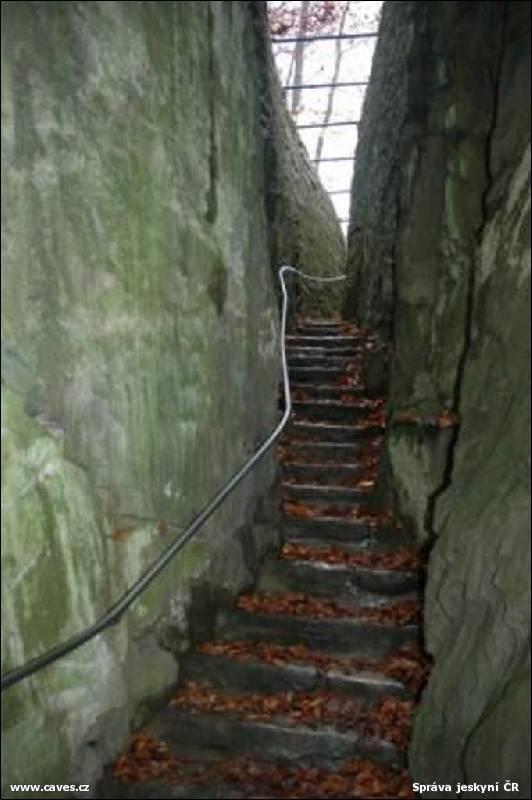Na Špičáku Cave - characteristics

JESENÍK KARST
The Jeseník Karst is a simplified name for the series of big bodies and smaller islets of crystalline limestones – marbles rising from folded complexes of metamorphicrocks and plutonic magmatites of geological units of the region of the Lužické Mountains and the Moravian-Silesian Region in the Králický Sněžník Mountains, the Hanušovická Highlands, the Hrubý Jeseník Mountains, the Rychlebské Mountains and the Zlatohorská Highlands of East Sudetenland in Northern Moravia. Numerous underground and surface karst phenomena, predominantly dolines, ponors, seepages and even s were formed in local limestones. In total, there are as many as 100 caves and abysses in the Jeseník Karst.

NA ŠPIČÁKU CAVE
-
In older literature they were also known under the name Supíkovice Cave or the Cave in Supíkovice (Tropfsteinhöhle in Saubsdorf).
-
They go through the Velký Špičák Hill (516 m a.s.l.), which is the highest peak of the karst cone emerging from sediments of the continental glacier between the villages of Písečná and Supíkovice in the Supíkovická Uplands, 10 km north of the city of Jeseník.
-
A predominantly horizontal labyrinth of passages, joints and chambers was created by surface water flows in crystalline limestones – marbles, but their unusual shapes were also influenced by underground lakes of melting water from the continental glacier which, especially during the next to last ice age, had an effect on the northern part of today's Czech Republic.
-
The discovery date of the cave is not known, but the first written mention of the cave dates from 1430. Also, numerous unique historical writings on the cave walls document their frequent visits. It belongs among the oldest recorded caves in Central Europe and, due to the official opening-up in 1885, also among the caves that have been open to the public for the longest time in this country.
-
The total length of all the passages known today is 410 m with denivelation of over 10 m. The entrance is situated 439 m a.s.l., the exit 437 m a.s.l.
-
The barrier-free (wheelchair-accessible) sightseeing tour is 230 meters long and the cave tour takes 30 min.
-
Air temperature in the caves is 7–9°C; relative air humidity is about 95%.
Evolution of the Caves
ORIGIN AND DEVELOPMENT OF THE NA ŠPIČÁKU CAVE
Tectonically disturbed layers of marbles that constitute the Velký Špičák Hill and its surroundings were significantly influenced by water from precipitations and surface streams. The karst joints were gradually widened due to calcite dissolution and underground channels were formed. Water ran through them into he resulting valleys and the cave labyrinth slowly evolved. Under the conditions seen in most of today's Czech Republic, the cave system below the Špičák Hill would probably consist of narrow fissure corridors that would maybe even be impenetrable for a man. Further development of the cave was however significantly influenced by the northern continental glacier, which especially in the next to last ice age (Saalian age) approximately before 150 thousand years ago was stopped as late as by today's Czech border mountains. The cave was even modelled by its melting water during warming and gradual recession of the glacier.
The development of underground cavities was significantly accelerated by more aggressive glacier water and, considering the fact that permanent underground lakes were formed there for a very long time, the glacier water predominantly caused their widening. The limestone was dissolved most actively at lake surfaces, so that the underground corridors were formed into an unusual heart-shaped profile and an outstanding horizontal level of ceilings and niches was formed in the whole system. This genesis and modelling of caves is unprecedented in today's Czech Republic and even in other countries it is very rare. Thus, the example of the Na Špičáku Cave was the first time this phenomenon was introduced in the world's specialised literature.